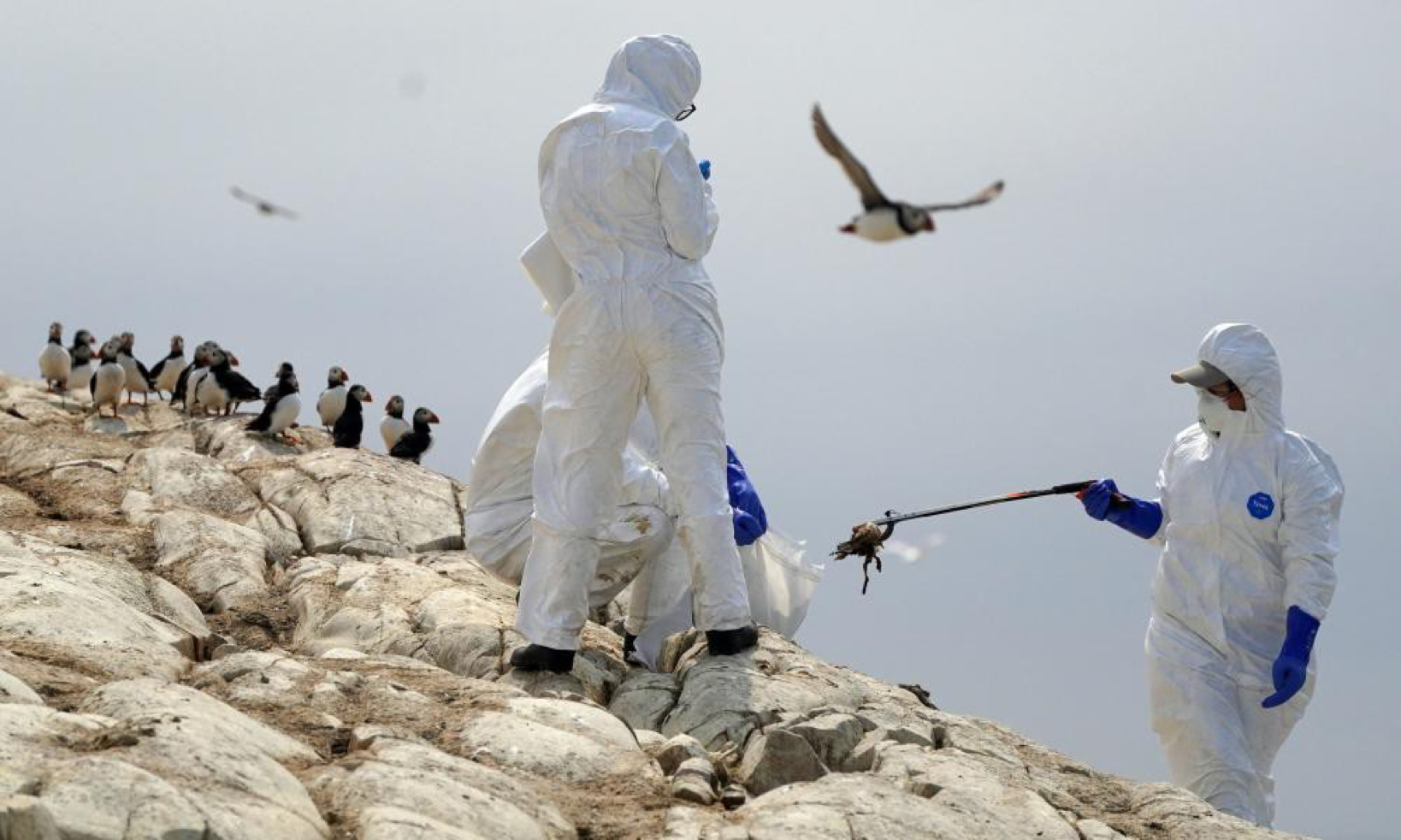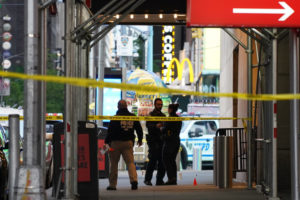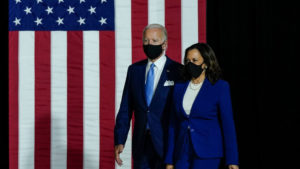In the past year, avian flu has ravaged colonies of seabirds in the UK. Gwen Potter, a National Trust countryside manager working on the Farne Islands, was among those who donned hazmat suits on the frontline
In May last year, our seabirds were starting to settle, having flown here from all over the world. It is an explosion of life, sound and smell – and it looked as if it was going to be a really good year.
On the Farne Islands, off the coast of Northumberland, the most numerous bird is probably the puffin, we’ve also got a lot of guillemots, razorbills, kittiwakes, arctic terns, sandwich terns, common terns, loads of other fantastic seabirds. It’s such a spectacle seeing all these birds fly in. The cliff-nesting birds are jostling for space, they’re really crushed up against each other.
You never take it for granted when you see the first birds coming back. Some have particular behaviours that you only see then. Kittiwakes, for example, do something called food begging. It’s a display to their partner where they kind of fluff up their wings and go “cheep cheep cheep” and show off their really bright throats. It is really cute.
In a good year, we have 100,000 pairs. They start pairing up when they come back, and I always wonder if they were with the same partner last year; many of the species mate for life and might not have seen each other over winter. Humans don’t belong everywhere, and this island is for birds. It is a privilege to be there and witness it.
The first bird flu reports came in from north Scotland in May. It did make our ears prick up because it is not something we’ve seen before in our seabird colonies. Bird flu tends to thrive in cooler temperatures and isn’t generally a problem during the summer – at least not in this country. Then it just started moving down the coast. We started to get really worried, as it got closer and closer.
By the time it got to the Bass Rock off the coast of Edinburgh, we were hearing about gannets dying en masse. Then we saw one or two gannets on the Farne Islands, which you don’t normally see. They were sitting on the edge looking out to sea. They didn’t look right. It’s hard to tell from a boat, but they looked ill. They probably came from the Bass.
Initially, it was a couple of birds, and then a couple of days later, it was a lot. I went to the outer islands and saw an area of cliff usually covered in guillemots. There was one sitting there in the middle of it, and then just dead birds and rock. Some adults died where they were nesting, and there were lots of dead chicks, too. Whether they died of the disease or their parents died and they starved as a result, we don’t know. I remember seeing one chick on its back, struggling with its little stubby wings helplessly flapping.
The razorbills went, then shags started to die. That was horrendous. One of the rangers saw a shag dead on its nest with live chicks still underneath.
Death of thousands of wild birds from avian flu is ‘new Silent Spring’
We were thinking we must be able to do something about this, there must be some guidance, or some way to prevent it spreading, but everything was geared towards poultry farms. There was no information on wild birds. We were working in a highly ventilated environment so we found some PPE and decided we had to pick up the bodies to try to save as many of the live ones as possible. It would have been even harder to do nothing.
Initially, we wondered: “What do we do with the carcasses?” We couldn’t bury them and didn’t want to chuck them in the sea. In the end, we managed to get a company to come and collect and incinerate them. We figured that was the safest option, as we couldn’t leave them.
It was horrendous picking them up. It was really hot, and we were wearing hazmat suits with goggles. Some of them were not in good condition when we collected them, they were already rotting and smelt awful. In total, we picked up around 6,000 dead birds. We just couldn’t keep up. What we collected was the tip of the iceberg.
Going out to areas that we would never normally go to during the breeding season was shocking, too. I knew cliff nesters would be badly affected but I thought other birds such as fulmars and puffins might be OK because they tend to give themselves a bit more space, but they weren’t. We found quite a few dead puffins – both adults and pufflings. The ones we found were those which were outside the burrow where they nest, we don’t know how many were dead inside the burrow. I remember thinking that for the puffins to get it, it must be so virulent, so deadly.
It is hard to describe. When you’re watching a nest or tracking a nest, you realise each bird has its own personality, it is an individual with a life. Dare I say, a soul. It has its own agency. So when you see that bird that you’ve followed, struggling for life or dead, it’s horrendous. There’s nothing you can do to help, you know it’s not going to recover and they don’t die quickly.
Often, sick birds gathered together in particular areas. On Brownsman, which is one of the outer group of islands, the sick kittiwakes would take themselves away from other birds and gather around a specific pond. All the birds sitting around that pond were dying. We saw hundreds of carcasses of birds washing up in the waves, too – including kittiwakes and guillemots, which must have died at sea.
Picking up a tiny chick is horrible, because that chick has had no life. But then it is also horrible with an enormous gannet or a shag, they’re hard to get into a bag. Whatever size or age a bird is, many of these birds have travelled across the globe to be here. The amount of things they have faced out there, and then they come to die, here, like this. We want to protect them and we can’t.
The biggest test of the impact will be how many come back next year – and there is no sign of it going away. For the rangers, it can be psychologically really devastating.
If it sweeps through again, I can’t see how some populations are going to be able to recover. For the great skuas, they think it could be an extinction-level event. Some of these birds on the island exist in tiny numbers. The terns worry me in particular, but shags are red list, kittiwakes are red list, puffins are red list. Some of them are vulnerable on a global scale to extinction. Seabirds face enough threats without this, it’s not good.
As told to Phoebe Weston.
Find more age of extinction coverage here, and follow biodiversity reporters Phoebe Weston and Patrick Greenfield on Twitter for all the latest news and features




